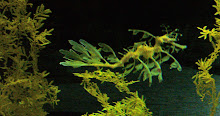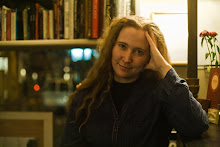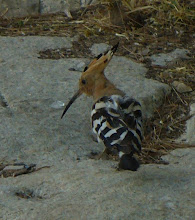This month, I am back in Jerusalem for the first time in over a year. My visit is primarily to see friends, but, now that I am freelancing, I cannot afford to let such a golden work opportunity slip by.
Before I left Britain, I had all sorts of grand plans of what I would do on the aeroplane and how I would schedule my work and writing around times with friends, as one does. Of course all of that has fallen by the wayside now. After a week of much fun and little productivity, I am soon playing catch-up. My first port-of-call is the city’s botanic gardens. Having been there several times previously, I am familiar with the layout and hoping to add to my image database with photographs of some of the many wild birds that frequent the place. Really good images can be sold to various image libraries or compiled into books, but they can also serve as inspiration or illustration for an article on the animal pictured.
My guidebook says that, to date, some 46 bird species have been spotted in the botanic gardens. I have personally seen kingfishers, jays, white spectacled bulbuls, Palestinian sunbirds and many ring-necked parakeets but the guidebook also mentions purple herons, Nubian shrikes, lesser white throats etc. On this visit, I see a Syrian woodpecker (Dendrocopus syriacus) (distinguishable from its better known and more northerly cousin- the Great Spotted Woodpecker- by the rhythm of its tapping) and several flashes of something I suspect may be white breasted kingfisher, Halcyon smyrnensis (another known visitor to these gardens).
As part of the Hebrew University of Jerusalem, the Botanic gardens has an active public education department; during this visit, there is an exhibition of botanical watercolours in one of the buildings and a seed- and postcard- stall manned by enthusiastic elderly ladies, who are somehow the same, the world over. I end up buying new guidebook on local butterflies for the pictures, since almost the entire text is in Hebrew..... Israel’s butterflies, much like its birds, are a mixture of familiar British and European species, with more exotic, Asiatic and African species and the odd endemic thrown in for good measure. Pictures of familiar British species like the red admiral and small skipper jostle for space in the book with more exotic creatures, like the Levantine Marbled White (Melanargia titea), Turkish Meadow Brown (Maniola telmessia) and Large Salmon Arab (Colotis fausta). For the details of each species, I am reliant on the internet or Israeli friends translating the appropriate text. It is very strange, as a writer, to find myself in a land where I am functionally illiterate.
In the event, I do not see any butterflies but I do use two sets of batteries photographing plants and birds in the botanic gardens and surrounding area. I sort through the images that evening and update this blog. I have recently started updating the blog in batches and automatic arranging time- release on articles, which is a great way to run any blog, as it regularises things and saves so much time.
The next day, I arrange interview with an eminent scientist/documentary maker for later in the week, then I search internet for information on the following interviewee. It takes more research and thought to prepare the right questions for an interview than I would ever have imagined before I started interviewing people regularly. My background as a research scientist is a huge help in terms of understanding the priorities of the scientists I interview, understanding the science and the contacts I made- rather than spending time searching for experts on the internet, I can often think very quickly of an ex-colleague who works in a particular field and then contact them to ask about- say- a news story in their subject area.
I finish my day by spending several hours adjusting the layout of my forthcoming book – an adapted form of this blog- also called “Weirdbeautiful”. The book is only about half finished and I am still trying to balance the aesthetic appeal (photographs) and the scientific content. The structure, and arrangement of a blog is very different from those of a book so developing one from the other is more of a challenge than it sounds.
The week ends with my conducting the interview that I arranged earlier in the week. Unlike my previous interviewees, today’s subject asked for a phone interview (rather than responding to a set of written questions). This is a skill I have yet to master. With the help of a friend, I spend an couple of hours working out how to do it and fiddling around with various recording devices and software packages. The interview will appear on paper but I cannot type fast enough to be sure of catching everything. The main problem is being able to record at a high enough volume for me to transcribe the audio files later. The volume is a problem- I have to strain to catch everything my subject says, but otherwise, the interview goes well and my subject is genial and informative. I have now to transcribe and edit (condense) his responses to fit my editor’s requirements.
Subscribe to:
Post Comments (Atom)









No comments:
Post a Comment